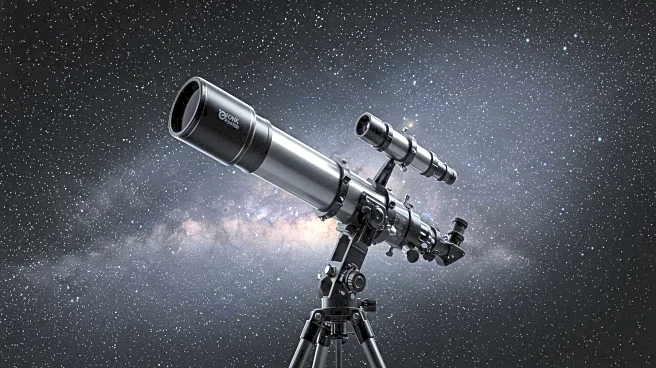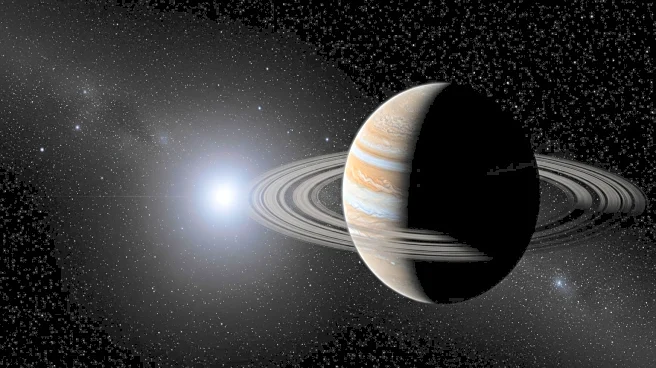Rapid Read • 9 min read
Astronomers have identified a distant galaxy, nicknamed 'Cosmic Grapes,' which appears to contain more than a dozen tightly packed star-forming clumps. This discovery was made using NASA's James Webb Space Telescope (JWST) and the Atacama Large Millimeter/submillimeter Array (ALMA). The galaxy, believed to have formed just 930 million years after the Big Bang, showcases at least 15 massive star-forming clumps in its rotating disk. The technique of gravitational lensing, where a foreground galaxy magnifies distant objects, was crucial in this discovery. The galaxy RXCJ0600-2007 served as the magnifying lens, allowing astronomers to study the internal structure of the distant galaxy with unprecedented sensitivity and resolution. The findings challenge previous observations that suggested a smooth, rotating disk, revealing instead a detailed view of the galaxy's inner structure and dense gas clumps primed for star formation.
AD
This discovery significantly alters the understanding of early galaxy formation and growth. By revealing the connection between a galaxy's internal structures and its overall rotation, the study suggests that many galaxies previously thought to be smooth may actually contain hidden clumps. This insight into the primordial Cosmic Grapes galaxy provides a new perspective on the formation and evolution of galaxies in the early universe. The ability to study such distant galaxies with high resolution offers astronomers a unique opportunity to explore the conditions and processes that shaped the universe shortly after the Big Bang. The findings could lead to a reevaluation of existing models of galaxy formation and contribute to a deeper understanding of cosmic evolution.
The study opens avenues for further research into the internal structures of distant galaxies. Astronomers may continue to use gravitational lensing and advanced telescopes like JWST and ALMA to explore other galaxies from the early universe. These observations could lead to new discoveries about the distribution and formation of star-forming clumps, potentially refining models of galaxy evolution. The ongoing analysis of such galaxies will likely provide more insights into the dynamics and characteristics of early cosmic structures, influencing future astronomical research and theories.
The discovery of the Cosmic Grapes galaxy highlights the importance of advanced observational techniques in astronomy. Gravitational lensing, combined with high-resolution imaging, allows scientists to uncover hidden aspects of distant galaxies that were previously inaccessible. This approach not only enhances the understanding of galaxy formation but also contributes to the broader field of cosmology by offering a glimpse into the universe's early stages. The study underscores the potential for future technological advancements to further unravel the mysteries of the cosmos.
AD
More Stories You Might Enjoy










